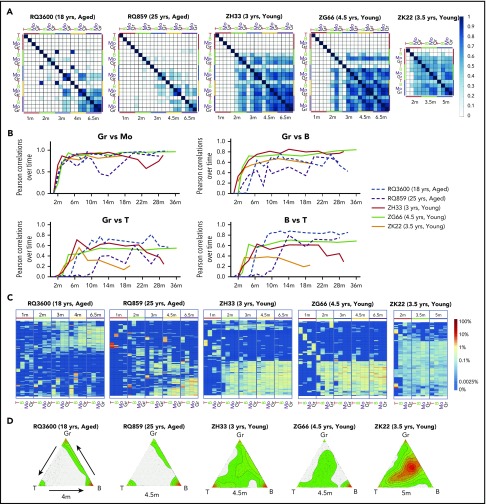Figure 2.
Short-term clonal contributions and emergence of MP clones. (A) Summary of clonal relationships at a population level as depicted by Pearson correlation coefficients of fractional contributions from all valid barcodes for all samples through 6.5 m. P values were all highly significant based on thousands of clones analyzed. (B) Pearson correlations between lineages plotted across time. Dashed lines represent the aged animals and solid lines, the young animals. (C) Heat maps of contributions from top contributing clones across time and across lineages during initial hematopoietic reconstitution through 6.5 m, ordered by unsupervised hierarchical clustering of the Euclidean distance between barcodes’ log fractional abundances in the samples. Each row in the heat map corresponds to a barcode and each column to a sample. The top 10 most abundant barcodes in at least one of the depicted samples are plotted across time in all samples. Color gradient depicts the log fractional contribution of individual barcodes to each sample. (D) Ternary (triangle) plots of the clonal contributions to T cells, B cells, and Gr in young and aged macaques at 4- to 5-m time points. Each dot within the triangle represents an individual barcode (clone), and the location of the dot within the triangle corresponds to the ratio of barcode abundance in each of the 3 cell lineages. Kernel density of dots within triangle regions is represented by colors and represents the density of dots (barcodes); red depicts high density and green depicts lower density.

